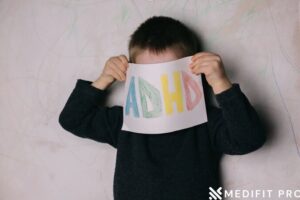Anxiety and depression are two of the most common mental health disorders that affect children in America. According to recent studies, approximately one in five children in the United States experience some form of mental illness, with anxiety and depression being the most prevalent.
It is crucial to address these issues as they can have long-lasting effects on a child’s emotional, social, and academic well-being. Moreover, untreated anxiety and depression can lead to more severe mental health disorders later in life.
In this article, we will provide a brief overview of what anxiety and depression are and how they manifest in children. We will also discuss the prevalence of these disorders in children in America and why it is essential to recognize and address them. Finally, we will offer some tips and strategies for parents, healthcare professionals, and educators on how to help children cope with anxiety and depression.
I. What are anxiety and depression ?
Anxiety and depression are two separate but often co-occurring mental health conditions. Anxiety involves excessive worry and fear about everyday situations, while depression involves persistent feelings of sadness, hopelessness, and loss of interest in daily activities. Both can significantly impact a person’s quality of life and require professional treatment.
II. Causes of Anxiety and Depression in Children
Anxiety and depression in children can be caused by a combination of factors. While some children may be genetically predisposed to anxiety and depression, environmental factors can also play a significant role.
1. Genetic Predisposition
• Children who have a family history of anxiety and depression are more likely to develop these disorders themselves.
2. Family Environment
• Children who grow up in an environment with high levels of stress, conflict, or neglect may be more susceptible to anxiety and depression.
• Parental mental health issues and substance abuse can also contribute to a child’s risk of developing anxiety and depression.
3. Traumatic Events
• Traumatic events, such as abuse, neglect, or the death of a loved one, can trigger anxiety and depression in children.
4. Societal Factors
• Academic pressure, social isolation, and bullying can also contribute to anxiety and depression in children.
• Children from marginalized communities may also face additional stressors, such as discrimination and financial insecurity, which can increase their risk of anxiety and depression.
5. Role of Technology and Social Media
• Increased screen time and social media use have been linked to increased anxiety and depression in children.
• Social media can also lead to feelings of social comparison, FOMO (fear of missing out), and cyberbullying, all of which can contribute to anxiety and depression.
It is essential to recognize and address the root causes of anxiety and depression in children to provide effective treatment and support.
Moreover, parents and caregivers should monitor their children’s screen time and social media use and encourage them to engage in physical activity, creative pursuits, and social activities outside of technology. By doing so, they can help mitigate the negative effects of technology on their children’s mental health.
III. Symptoms of Anxiety and Depression in Children
Anxiety and depression can manifest in different ways in children than in adults. It’s important to recognize these differences so that children can receive the appropriate treatment and support they need.
1. Symptoms of Anxiety in Children
• Excessive worry or fear, often about future events or past experiences
• Refusal to attend school or participate in activities
• Frequent crying and tantrums
• Difficulty sleeping or nightmares
• Physical symptoms such as headaches, stomachaches, or nausea
• Avoidance of social situations or extreme shyness
• Perfectionism or fear of making mistakes
2. Symptoms of Depression in Children
• Persistent feelings of sadness or hopelessness
• Loss of interest in activities they previously enjoyed
• Changes in appetite and/or weight loss
• Difficulty sleeping or oversleeping
• Fatigue or loss of energy
• Irritability or outbursts of anger
• Physical symptoms such as headaches, stomachaches, or other aches and pains
• Difficulty concentrating or making decisions
It is important to note that children may not always be able to verbalize their feelings and emotions, and their symptoms may manifest in physical ways. Therefore, it’s crucial to observe any changes in behavior or mood and seek professional help if needed.
3. How Symptoms May Differ in Children
• Children may express anxiety and depression through physical symptoms, such as stomachaches, headaches, or other unexplained aches and pains.
• Children may not be able to describe their emotions and may express their feelings through their behavior, such as irritability or avoidance of social situations.
• Children may not recognize their symptoms as anxiety or depression and may not seek help on their own.
By understanding the unique symptoms of anxiety and depression in children, parents, educators, and healthcare professionals can recognize and address these issues early on.
IV. Diagnosis and Treatment
Early diagnosis and treatment are crucial in addressing anxiety and depression in children. By identifying and treating these conditions early, children can avoid long-term negative effects on their mental health and overall well-being.
1. Diagnosis of Anxiety and Depression in Children
• Pediatricians and mental health professionals may use various assessments to evaluate children for anxiety and depression, such as the Children’s Depression Inventory or the Child Behavior Checklist.
• The diagnostic process may also involve a physical exam and a review of the child’s medical history and family history of mental health conditions.
• It’s important to note that anxiety and depression can co-occur, and children may have other mental health conditions, such as attention-deficit/hyperactivity disorder (ADHD), that can affect their behavior and mood.
2. Treatment Options for Children with Anxiety and Depression
• Therapy is often the first-line treatment for anxiety and depression in children. Cognitive-behavioral therapy (CBT), for example, helps children identify and change negative thought patterns and behaviors that contribute to their anxiety and depression.
• Medication may also be prescribed for children with severe anxiety and depression, but it should always be used in conjunction with therapy and under the guidance of a healthcare professional.
• Lifestyle changes, such as regular exercise, a healthy diet, and adequate sleep, can also have a positive impact on children’s mental health.
It’s important to involve parents, teachers, and other caregivers in the treatment process to ensure that children receive consistent support and encouragement. By working together, healthcare professionals and caregivers can help children manage their symptoms and improve their quality of life.
V. Coping Strategies for Parents and Children
Anxiety and depression in children can be overwhelming for both the child and their parents. While therapy and medication can help manage symptoms, there are also coping strategies that parents and children can use to promote mental wellness and build resilience.
1. Coping Strategies for Parents
• Create a supportive environment: Children with anxiety and depression benefit from a safe and nurturing environment where they feel loved and supported. Parents can create this environment by being patient, empathetic, and understanding.
• Maintain open communication: Communication is key in helping children manage their anxiety and depression. Parents should encourage their children to express their thoughts and feelings and provide opportunities for them to talk about their struggles.
• Encourage healthy habits: Eating well, getting enough sleep, and regular exercise can all help improve mental health. Parents can encourage these habits by modeling healthy behaviour and involving their children in activities like cooking healthy meals and going for walks. To learn more about it, click Developing Healthy Habits in Children
2. Coping Strategies for Children
• Mindfulness and relaxation techniques: Mindfulness and relaxation techniques, such as deep breathing and meditation, can help children manage their anxiety and depression by promoting relaxation and reducing stress.
• Physical activity: Exercise is a natural mood booster and can help alleviate symptoms of anxiety and depression. Children can engage in physical activities they enjoy, such as dance, sports, or yoga.
• Creative outlets: Art, music, and other creative activities can be a powerful outlet for children to express their emotions and cope with their anxiety and depression.
It’s important for parents and children to work together in developing coping strategies that work for them. Encouraging a positive and supportive environment can help children build resilience and learn to manage their symptoms more effectively.
VI. Conclusion
Anxiety and depression are prevalent mental health disorders in children, and it’s crucial to recognize and address these conditions early on. While there are various causes, symptoms, and treatment options for anxiety and depression in children, it’s important to remember that each child is unique and may require individualized care.
In this article, we’ve explored the prevalence of anxiety and depression in children, their potential causes, and the symptoms that may manifest in children differently than in adults. We’ve also discussed the importance of early diagnosis and treatment, along with various coping strategies for parents and children to promote mental wellness.
It’s essential for parents, healthcare professionals, and educators to work together in creating a supportive environment for children with anxiety and depression. This involves maintaining open communication, encouraging healthy habits, and engaging in mindfulness, physical activity, and creative outlets. By building resilience and promoting mental wellness, we can help children overcome anxiety and depression and lead happy and fulfilling lives.
In conclusion, recognizing and addressing anxiety and depression in children is vital. By providing the necessary support, we can help children manage their symptoms, build resilience, and achieve their full potential. We must continue to raise awareness about mental health disorders in children and work towards promoting a more inclusive and supportive environment for our children.
To have more knowledge about children’s mental health, also read Children’s Mental Health is More Important Than Ever Now


























Recent Comments